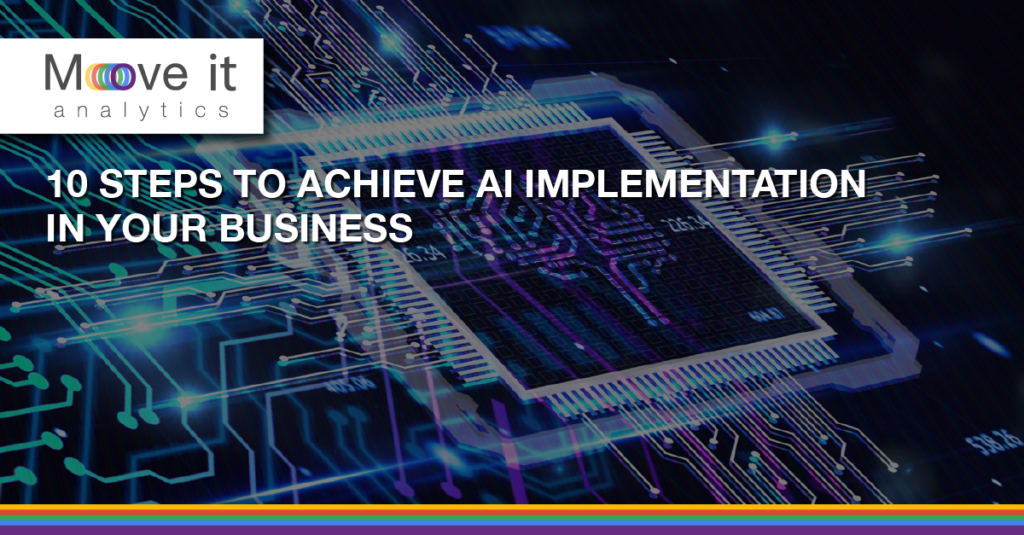
Maximizing the value of insights into your business, industry and competition requires a thoughtful, creative, experimental, incremental and team approach to deploying AI.
AI technologies are quickly maturing as a viable means to enabling and supporting essential business functions. But creating business value from artificial intelligence requires a thoughtful approach that balances people, processes and technology.
AI comes in many forms: machine learning, deep learning, predictive analytics, natural language processing, computer vision and automation. Companies must first start with a solid foundation and realistic view to determine the competitive advantages that an AI implementation can bring to their business strategy and planning.
“Artificial intelligence encompasses many things, and there is a lot of hyperbole and in some cases exaggeration about how intelligent it really is,” said John Carey, managing director at business management consultancy AArete.
Early implementation of AI is not necessarily a perfect science and may need to be experimental at first — beginning with a hypothesis, followed by testing and finally measuring results. Early ideas are likely to be flawed, so an exploratory approach to deploying AI that’s taken incrementally is likely to produce better results than a big bang attitude. To avoid failure, these 10 steps can help ensure a successful AI implementation in your enterprise.
1. Build data fluency
Practical conversations about AI require a basic understanding of how data powers the entire process. “Data fluency is a real and challenging barrier — more than tools or technology combined,” said Penny Wand, technology director at IT consultancy West Monroe. In a 2020 report, Forrester Research found that 90% of data and analytics decision-makers surveyed see increased use of data insights as a business priority, yet 91% admitted that using those insights is a challenge for their organizations. Forrester further reported that the gap between recognizing the importance of insights and actually applying them is largely due to a lack of the advanced analytics skills necessary to drive business outcomes. “Executive understanding and support,” Wand noted, “will be required to understand this maturation process and drive sustained change.”
2. Define your primary business drivers for AI
“To successfully implement AI, it is critical to learn what others are doing inside and outside your industry to spark interest and inspire action,” Wand explained. When devising an AI implementation, identify top use cases and assess their value and feasibility. In addition, consider your influencers and who should become champions of the project, identify external data sources, determine how you might monetize your own data externally, and create a backlog to ensure that the project’s momentum is maintained.
3. Identify areas of opportunity
Focus on business areas with high variability and significant payoff, advised Suketu Gandhi, a partner at digital transformation consultancy Kearney. Teams comprising business stakeholders who have technology and data expertise should use metrics to measure the impact of an AI implementation on the organization and its people.
4. Evaluate your internal capabilities
Once use cases are identified and prioritized, business teams need to map out how these applications align with your company’s existing technology and human resources. Education and training might help bridge the technical skills gap internally, while corporate partners can facilitate on-the-job training. Meantime, outside expertise could help accelerate promising AI applications.
5. Identify suitable candidates
It’s important to narrow a broad opportunity to a practical AI deployment — for example, invoice matching, IoT-based facial recognition, predictive maintenance on legacy systems or customer buying habits. “Be experimental,” Carey said, “and include as many people [in the process] as you can.”
6. Pilot an AI project
To turn a candidate for AI implementation into an actual project, Gandhi believes a team of AI, data and business process experts is needed to gather data, develop algorithms, deploy scientifically controlled releases and measure impact and risk.
7. Establish a baseline understanding
The successes and failures of early AI projects can help increase understanding across the entire company. “Ensure you keep the humans in the loop to build trust, and engage your business and process experts with your data scientists,” Wand said. Also recognize that the path to AI starts with understanding the data and good old-fashioned rearview mirror reporting to establish a baseline of understanding. Once a baseline is established, it’s easier to see how the actual AI deployment proves or disproves the initial hypothesis.
8. Scale incrementally
The overall process of creating momentum for an AI deployment begins with achieving small victories, Carey reasoned. Incremental wins can help build confidence across the organization and inspire more stakeholders to pursue similar AI implementation experiments from a stronger, more established baseline. “Adjust algorithms and business processes for scaled release,” Gandhi suggested. “Embed [them] into normal business and technical operations.”
9. Bring overall AI capabilities to maturity
As AI projects scale, business teams need to improve the overall lifecycle of AI development, testing and deployment. To ensure sustained success, Wand offers three core practices for maturing overall project capabilities:
- Build a modern data platform that streamlines how to collect, store and structure data for reporting and analytical insights based on data source value and desired key performance indicators for businesses.
- Develop an organizational design that establishes business priorities and supports agile development of data governance and modern data platforms to drive business goals and decision-making.
- Create and build the overall management, ownership, processes and technology necessary to manage critical data elements focused on customers, suppliers and members.
10. Continuously improve AI models and processes
Once the overall system is in place, business teams need to identify opportunities for continuous improvement in AI models and processes. AI models can degrade over time or in response to rapid changes caused by disruptions like the COVID-19 pandemic. Teams also need to monitor feedback and resistance to an AI deployment from employees, customers and partners.
Coexisting with machines
During each step of the AI implementation process, problems will arise. “The harder challenges are the human ones, which has always been the case with technology,” Wand said.
A steering committee vested in the outcome and representing the firm’s primary functional areas should be established, she added. Instituting organizational change management techniques to encourage data literacy and trust among stakeholders can go a long way toward overcoming “human” challenges.
“AI capability can only mature as fast as your overall data management maturity,” Wand advised, “so create and execute a roadmap to move these capabilities in parallel.”
Work with a Certified Looker Partner to learn how AI, Analytics and a powerful BI ecosystem can step-up your business.
For a limited time, book a FREE Data Health Check and see how Move It Analytics, Google Cloud and Looker can take your business to the next level.
